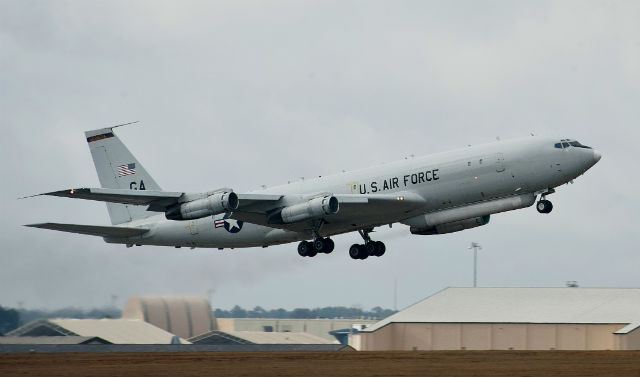The US military's recent budget proposal would invest billions of dollars in next-generation projects despite slashing funding for tankers, fighter jets and other existing aircraft.
Projects that would benefit from the proposal, which still needs Congressional approval, include the US Navy’s unmanned carrier-launched airborne surveillance and strike (UCLASS) system.
The proposal would inject $403 million in fiscal year 2015 for UCLASS, more than three times the $122 million allotted for the project in the current fiscal year.
The Navy plans to invest $3.7 through 2020 million on UCLASS and seeks to eventually field six to 24 of the stealthy UAVs, according to a Government Accountability Office report.
Though UCLASS requirements have recently been in flux, a demonstrator built by Northrop Grumman called the X-47B has conducted landings and takeoffs from US aircraft carriers..
Other UCLASS competitors include Boeing, Lockheed Martin and General Atomics Aeronautical Systems.
| Programme | FY14 funding | FY15 proposed funding |
| Joint surveillance target attack radar system (JSTARS) replacement | 0 | 73.1 |
| Long-range strike bomber (LRS-B) | 359 | 914 |
| Presidential aircraft replacement (PAR) | 0 | 11.0 |
| T-X fighter trainer | 0 | 8.20 |
| Unmanned carrier-launched airborne surveillance and strike (UCLASS) system | 122 | 403 |
Funding in USD, thousands.
The US Air Force would receive $914 million next fiscal year for its long-range strike bomber (LRS-B) programme, up from $359 million this fiscal year.
That classified project calls for 80 to 100 aircraft with a target operational date in the mid-2020s.
Companies to express interest in the project include Northrop Grumman and Boeing, which has said it will team with Lockheed Martin.
The proposal also earmarks $73.1 million for the USAF to develop a replacement for its Northrop Grumman E-8C joint surveillance target attack radar system (JSTARS).
Those aircraft, modified Boeing 707s, detect ground targets at long range at night and in poor weather.
The service has said it seeks to replace JSTARS with business jet-sized aircraft, and it seeks initial operational capability in 2022.

USAF E-8C JSTARS
The budget would also provide $8.2 million in fiscal year 2015 for the USAF’s T-X fighter trainer programme, which would replace the service’s 430 Northrop T-38 Talons.
Those aircraft have been in service for about 51 years.
Candidates include the T-50 Golden Eagle, made by Korea Aerospace Industries and Lockheed, Alenia Aermacchi’s T-100, and the Hawk, an aircraft proposed by BAE Systems and Northrop Grumman.
Boeing, teamed with Saab, has promoted a clean-sheet aircraft to fill the role.
The Pentagon also wants to spend $11 million in fiscal year 2015 for a presidential aircraft replacement.
The funding follows a 2009 request for information in which the Air Force announced its intention to acquire three widebody aircraft to replace the current nearly 25-year old Boeing VC-25s, which are converted 747-200s.
The Pentagon’s $495.6 million proposal would invest in those programmes while cutting funding for Lockheed’s F-35 Joint Strike Fighter and KC-130J transport and Boeing’s F/A-18E/G Super Hornet and P-8A Poseidon.
The proposal also retires Fairchild Republic’s A-10, Bell’s AH-64D Kiowa Warrior and Lockheed’s U-2.
Source: FlightGlobal.com



















